Have you ever walked into a room and felt instantly captivated—not just by how it looks, but also by how it feels and sounds?
If so, you’ve likely encountered a space where visual and auditory elements are in perfect harmony.
But what if you could easily create such an immersive environment in your own home or office?
In today’s fast-paced, multitasking world, creating a multi-sensory experience is no longer a luxury; it’s a necessity.
Combining LED light strips with acoustic panels can transform any room into a dynamic living space that appeals to both the eyes and ears.
Ready to elevate your space with a multi-sensory experience?
Let’s dive in to explore the nuts and bolts of pairing LED light strips with acoustic panels, and why this combo is a game-changer for modern living and working environments.
Why Should You Consider Airspace Behind Acoustic Panels?
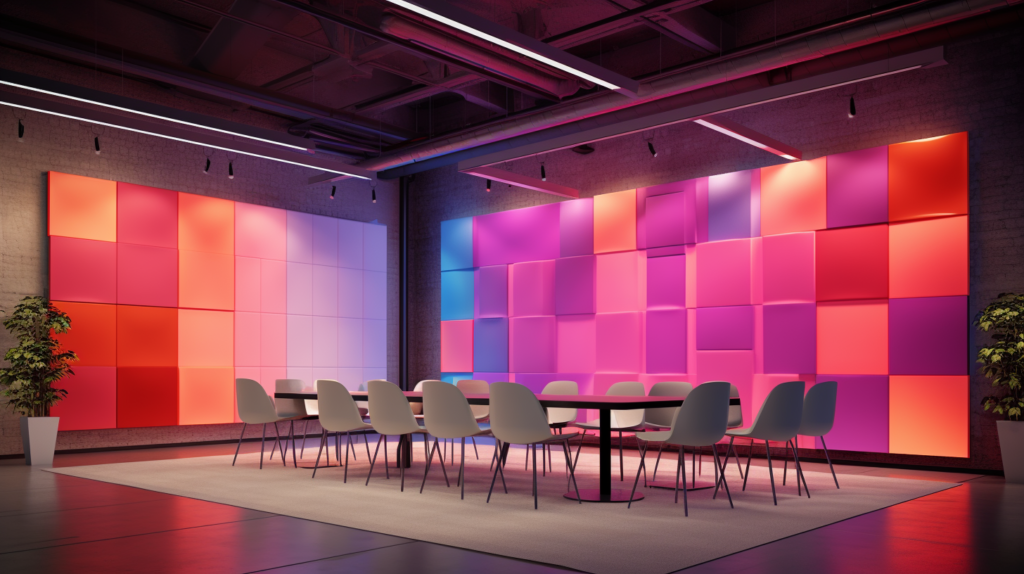
The idea of leaving airspace behind acoustic panels is not new but is often overlooked.
This gap, or airspace, serves as a kind of cushion that can trap and absorb low-frequency sounds, thereby enhancing the effectiveness of the panels.
The science behind this is fairly straightforward: the airspace acts as a resonating chamber that helps absorb more sound energy.
Beyond sound absorption, the airspace also serves as a thermal insulator. This adds an extra layer of energy efficiency to your setup.
While it might not be a primary reason for considering airspace, it’s a nice bonus that can result in some cost savings on your energy bills.
For those interested in a deeper dive into the topic of airspace behind acoustic panels, I have covered it extensively in a previous article.
This article includes scientific data, expert opinions, and practical tips, making it a must-read for anyone who is serious about optimizing their acoustic setup.
Why Are LED Light Strips Popular in Interior Design?
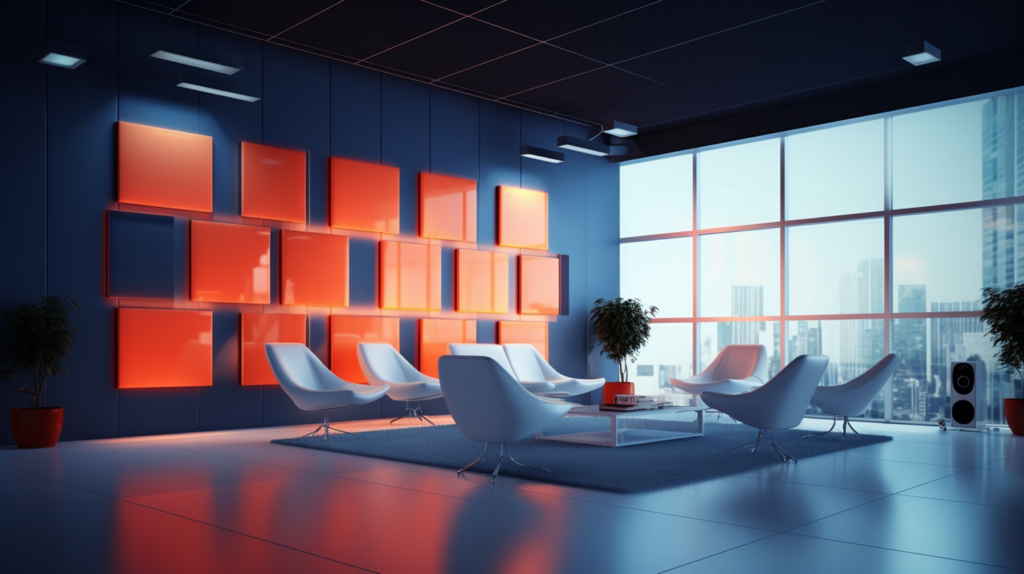
LED light strips are a revolution in lighting design. Unlike traditional bulbs or tube lights, LED strips are flexible, energy-efficient, and incredibly long-lasting.
They offer a level of versatility that is unparalleled, opening up avenues for creative lighting solutions that were previously unthinkable.
Moreover, LED light strips come with a range of color options and features such as dimming and remote control.
This allows you to adjust the lighting to match the mood or activity, be it a lively party or a cozy movie night.
The ability to customize lighting has a profound impact on the ambiance of a space, making LED light strips a go-to option for those looking to elevate their interior design.
The aesthetic appeal of LED light strips is also noteworthy.
Their sleek and slim profile enables them to be installed in places where traditional lighting solutions would be cumbersome or impossible.
This makes them ideal for accent lighting, under-cabinet lighting, and even outdoor installations, thus expanding the scope of their application immensely.
How Can LED Light Strips and Acoustic Panels Work Together?
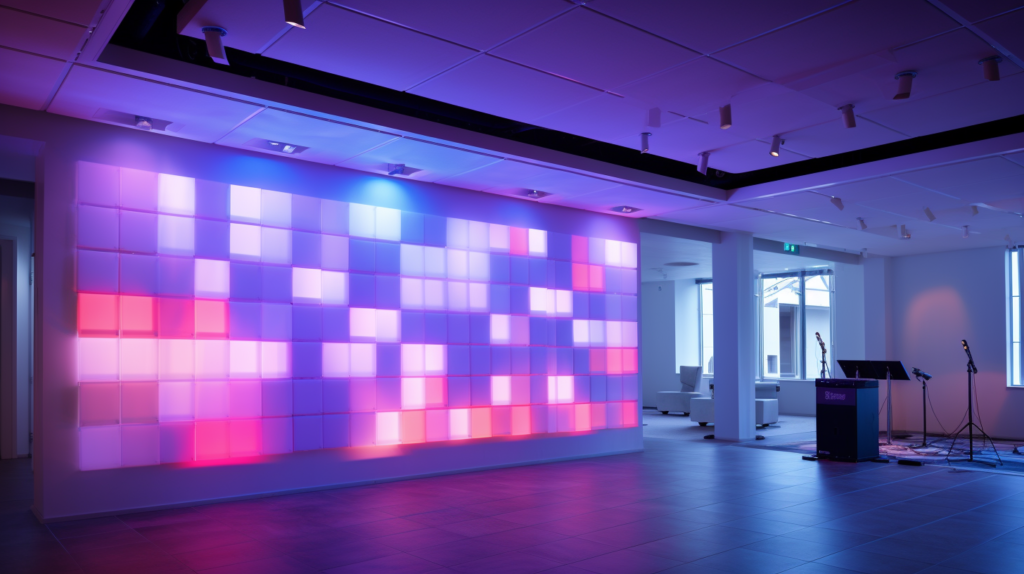
The idea of integrating LED light strips with acoustic panels is an innovative one, and it’s catching on for several good reasons.
The first and most obvious advantage is aesthetic. LED light strips can create a mesmerizing visual effect when placed behind acoustic panels.
The light emanating from the strips casts a soft, diffuse glow on the wall, creating a sense of depth and adding a layer of sophistication to the room’s design.
But it’s not just about the visual impact. Combining LED light strips with acoustic panels delivers a multisensory experience that is more than the sum of its parts.
The acoustic panels work to improve the sound quality in the room, reducing noise and enhancing the clarity of any audio.
When you pair this with the visual appeal of LED light strips, you get an experience that engages multiple senses. It’s a setup that not only looks good but also sounds good.
Does Airspace Improve the LED Light Strip Experience?
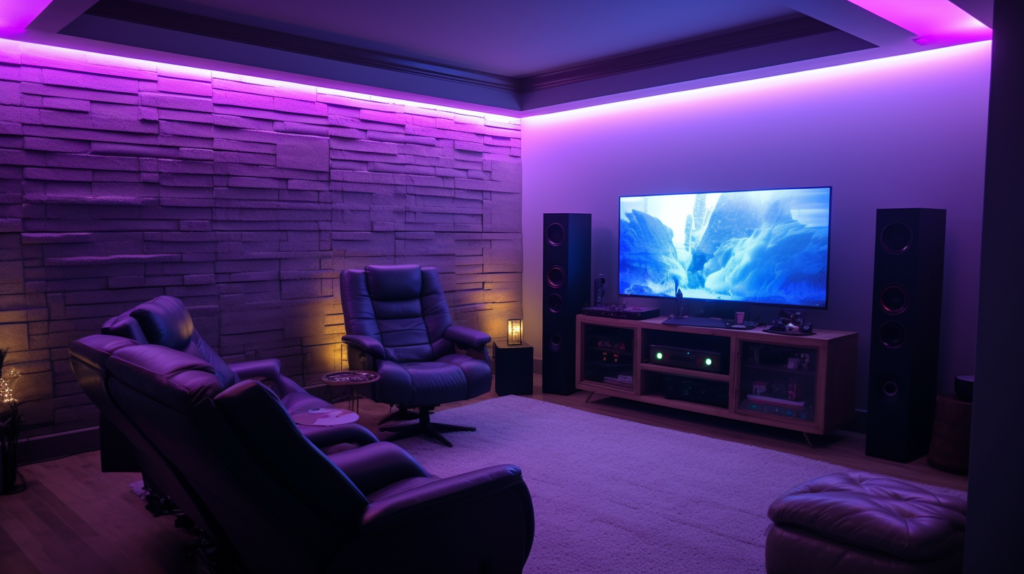
The integration of airspace in this setup has multiple advantages.
From an aesthetic standpoint, the gap allows the LED light to disperse more evenly, creating a more diffuse and appealing glow.
This is particularly effective when using colored LED light strips, as the colors appear more vibrant yet softer, providing a more visually pleasing result.
The airspace also contributes to the acoustic effectiveness of the panels. The gap behind the panels acts as a resonating chamber, enhancing sound absorption.
Therefore, when LED light strips are incorporated into this setup, you’re essentially getting the best of both worlds: enhanced visual appeal and improved sound quality.
Where Should You Install LED Light Strips Behind Acoustic Panels?
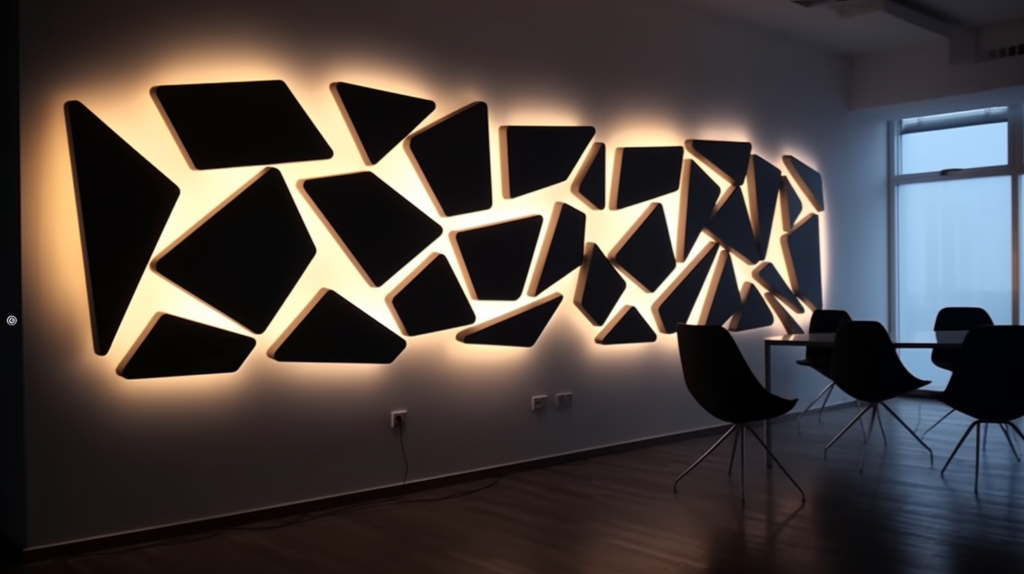
The beauty of this combination is its versatility. It’s a setup that can be effectively employed in a variety of settings.
Home theaters are an obvious choice. Here, the LED lighting can add to the cinematic experience while the acoustic panels work to optimize the audio quality.
Corporate boardrooms and offices can also benefit significantly from this setup.
The acoustic panels can help to create a more conducive environment for discussions and presentations, while the LED lighting can be adjusted to suit different moods and settings.
In public spaces like restaurants or art galleries, the combination can serve as a unique design feature.
It helps to create an environment that is not just visually stimulating but also comfortable from an auditory standpoint.
How Do You Install LED Light Strips Behind Acoustic Panels?
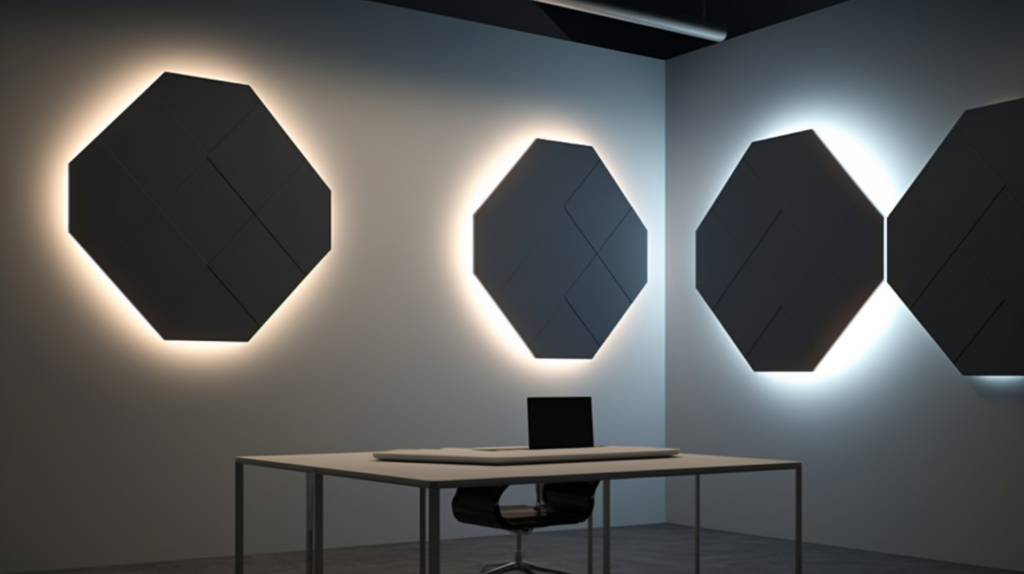
The installation process, while straightforward, does require a bit of planning. Begin by measuring the area where you intend to install the acoustic panels.
This will help you determine the length and configuration of the LED light strips.
Once you’ve got your measurements, the next step is to attach the LED light strips to the back of the acoustic panels.
Make sure you’re following all safety guidelines, especially since this involves electrical work.
It’s often a good idea to consult or hire professionals for this step to ensure that everything is done up to code.
After securing the LED light strips, you can proceed to mount the acoustic panels on the wall. Remember to maintain the necessary airspace behind the panels for optimal effectiveness.
The final step is to connect the LED strips to a power source and test them out to ensure everything is working as expected.
What Are the Common Mistakes to Avoid When Combining LED Light Strips and Acoustic Panels?

Combining LED light strips with acoustic panels is a relatively new idea, and it’s easy
to make mistakes. One common error is to ignore electrical safety guidelines.
Always make sure your connections are secure and that the LED light strips are well-insulated to minimize the risk of electrical hazards.
Another frequent mistake is incorrect placement of the LED light strips or the panels, which can lead to suboptimal performance both visually and acoustically.
To avoid this, it’s essential to plan your installation carefully, perhaps even seeking expert advice to ensure that you’re maximizing the benefits of both components.
Are LED Light Strips and Acoustic Panels a Good Investment?
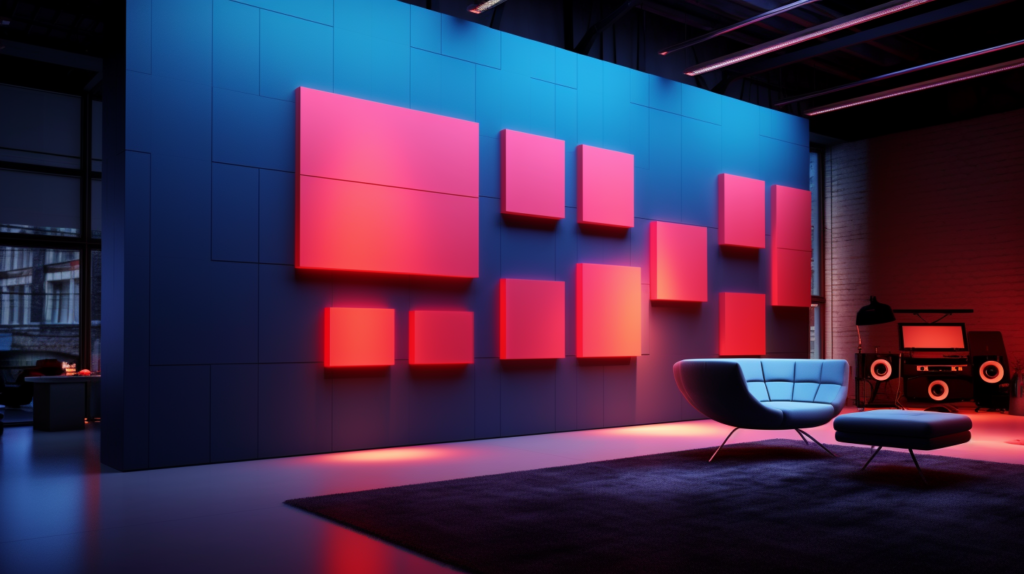
Given the multifaceted benefits, combining LED light strips with acoustic panels is undoubtedly a worthy investment.
You’re essentially getting a two-in-one solution that enhances both the auditory and visual experience.
This makes it an excellent choice for those looking to create a multi-sensory environment.
Moreover, the energy efficiency of LED light strips coupled with the potential thermal insulation benefits of the airspace behind the panels can result in some long-term cost savings.
When you factor in these functional advantages along with the aesthetic appeal, it’s easy to see why this setup offers excellent value for the investment.
Conclusion
Combining LED light strips with acoustic panels offers a multi-sensory experience that elevates both the visual and auditory quality of a space.
The fusion of these elements results in a harmonious blend of form and function.
From energy efficiency to acoustic comfort, this pairing is an investment with long-term benefits.
Whether you’re enhancing a home, office, or public space, this innovative combination sets a new standard for interior design.
In short, it’s a decision that promises to add value to any environment.
